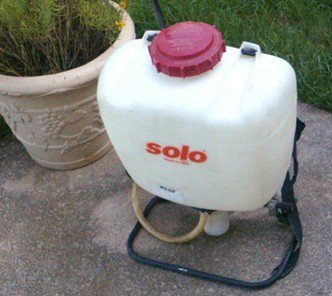AgriGro Directions for Use
for
Biostimulants & Liquid Calcium
for Best Results
Page Contents
- Spray Equipment Recommendations
- Cautions for Use in Hot Weather
- "Do Not Spray" Cautions
- Product Mixing Rates
- Additional Instructions
1. Spray Equipment Recommendations
Applying Biostimulant via Fertigation Systems
Fertigation Systems are becoming more popular and include such models as EZ Flow, or others. Fertigation systems usually have a small tank (1 to 10 gallon or larger) attached to the below ground sprinkler system and meters out small quantities into the irrigation line each time you water. Your plants receive small amounts of biostimulant each day or as often as you water. If you don't have a sprinkler system, you can still use a fertigation system connected to a water hose or dripline or soaker hose.Fertigation is a great way to automatically apply very small amounts daily for fantastic results, even during hot summer weather.
Hose End Sprayers
Hose end sprayers consist of a small, quart-sized tank that attaches to a water hose. It works by consistently siphoning out a small amount of product into the water stream. It is good for applying biostimulants or other liquid chemicals onto lawns, gardens, and other plants.
For our biostimulants, be sure to purchase a hose end sprayer that does not dilute the product inside the canister, but rather siphons the product straight from the sprayer cup into the water stream.
Any product not siphoned out can then be poured directly back into the product bottle. An example of this sprayer is the "Gilmour 362 Professional All-Purpose Hose End Sprayer".
Garden Pump Sprayer or Backpack Sprayer

These are small pump-up garden sprayers found at any home and garden store. Most homes have one. Backpack sprayers hold more and are heavier due to a larger tank, but is carried like a backpack.
Remember, if you already have a sprayer and have used it to spray herbicides, make sure you clean it out with ammonia and water first before spraying biostimulant products, or any other product, on plants. Ammonia will neutralize most chemicals. Any herbicide left in the sprayer, even small amounts, can harm your plants.
Directions for Use with Sprinkling Cans
You can use a sprinkling can to water you plants and flowers. Simply pour in the measured amount of plant biostimulant and fill with water. Lightly sprinkle over plants or saturate roots with water/biostimulant mixture. For large container plants, put an ounce of biostimulant in two gallons of water and soak soil/roots in container. You will love the results.
2. Important Caution Notes During Hot Weather
Many products, including biostimulants, can harm more delicate leaf foliage of plants grown outside when product is applied in HOT summer weather.Delicate plants include certain flowers, such as, Impatiens, Camellias, etc. Apply to the soil in hot weather or use low rates and spray in the evening when applying to delicate plants in summer.* Water thoroughly. Gilour hose end sprayers are perfect for spraying biostimulants. (*see bottom of page for "very low rates")
Hardy plants include lawn grasses, most woody stemmed plants, such as azaleas, shrubs, trees, etc. Rarely will these plants be harmed in hot weather. However, be cautious when temps are above 95 degrees.
3. Caution: Do Not Spray...
- Do not spray African Violets
- Do not spray directly on rose petals as staining may occur
5. Additional Instructions and Directions for Use
*Very low rates are less than one ounce per gallon, i.e. 1/2 oz or 1/4 oz. Very low rates in HOT summer months are to be used on delicate plants. If you are unsure, always do a test on a plant before spraying them. Watch the plant for 24 hours before spraying more. Very low rates can be applied to plants through fertigation systems all year long.
**Super-Cal Liquid Calcium cannot be mixed with phosphates, such as glyphosate, the active ingredient of Round-Up, Rodeo, and others. The product will gel. If you are unsure if Super-Cal can be mixed with a chemical, do a jar test first to see the reaction.
AgriGro Test Results
AgriGro products have been thoroughly tested. See the pictorial and documented results from the 80's and 90's during the early days of the product.
How AgriGro Works
Certified Lab and University have put AgriGro through the paces and the results are amazing. Check them out here.
Share This page:

Due to how biostimulants work, you will get the best results by applying more frequent low dose applications instead of less frequent heavier dose applications. Virginia Tech, Turfgrass pathology Dept. My experiences with biostimulants confirm this, as well. Lighter, frequent doses on delicate flowers. Russ James, Lawn Care Academy |
For this very reason thousand of farm, orchards, and nurseries around the world use All Natural AgriGro Biostimulants. You should too. |
